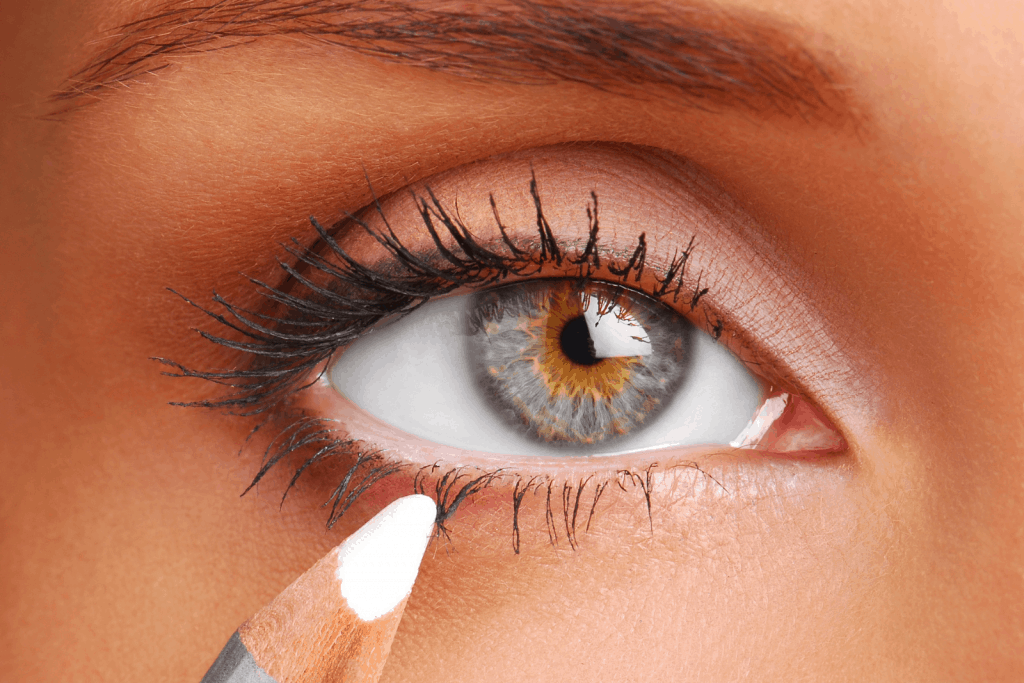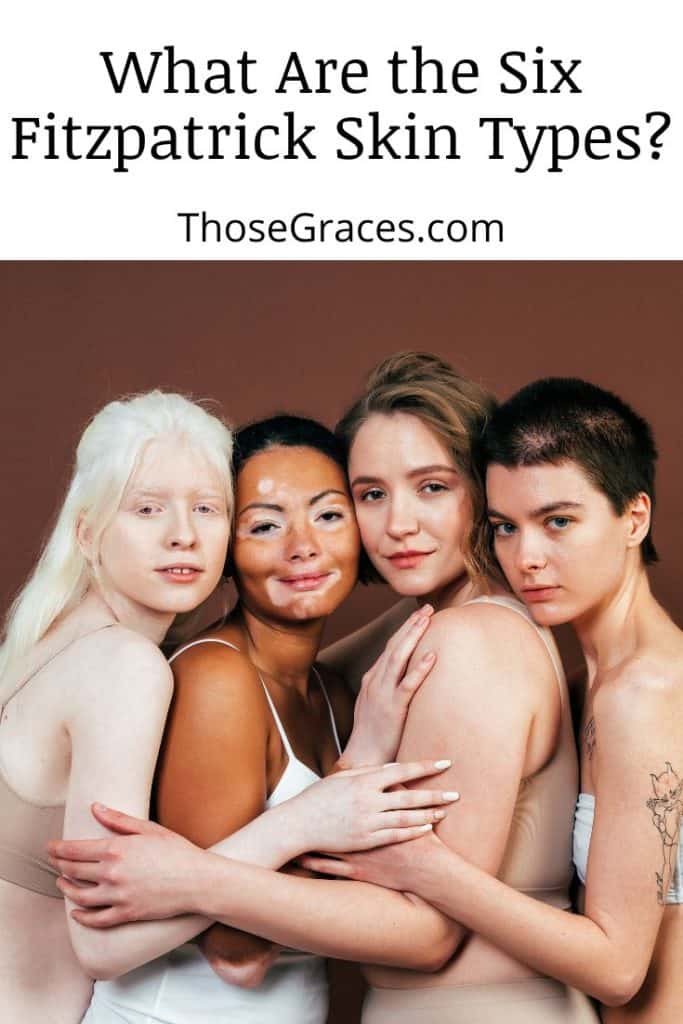As a beauty enthusiast identifying my Fitzpatrick skin type was a significant achievement
Finding the right shade of foundation and concealer for my pale skin has always been an uphill battle.
All of us have different types of skin tones, and understanding our skin color better is the key to taking care of it better.
Let’s get started then, shall we?
READ MORE: 26 Must-Know Skin Tones Names
Table of Contents
Why is it Important to Know the Fitzpatrick Skin Types?

The skin is the largest organ of our body, which is the key to our health and beauty. The skin has the ability to protect us from environmental insults and maintain a healthy pH balance.
It also plays a vital role in regulating temperature, moisture, oil production, and sebum secretion.
The Fitzpatrick Skin Type System is a simple and effective way to help you identify your skin type so that you can choose products that work best for you.
The Fitzpatrick skin type is a classification system that categorizes people according to their skin color and the degree of pigmentation. [1]
Thomas B. Fitzpatrick developed them in 1975. Here’s why it is best to know about your skin typing.
1. Evaluate Risk for skin cancer:
Individuals with lighter skin run a risk of skin cancer as compared to those with darker skin. Knowing your constitutive skin color can help determine whether or not you are at risk of skin cancer.
2. Protect Your Skin from Sun Exposure:
Your skin phototypes can determine how many hours of sun exposure you need to attain brown skin. It also determines if you need tanning beds or tanning cream to develop a brown pigment.
3. Finding Effective Skincare Products:

Knowing your skin type can help you understand how your body works, what products best suit you, and how to improve or maintain your skin health.
Knowing your skin type is also important because it can help you choose the right skincare products.
Your skin color determines what cosmetic procedures work on your skin. Dr. Sandra Lee says, “I look at the skin color and ethnicity during my evaluation.” (2)
Check: Makeup Skin Tone Chart
What Are the Six Fitzpatrick Skin Types?
There are six different types of skin. Each requires different skin care treatments and ingredients to help correct problems like acne and pigmentation or prevent future breakouts from forming.
Here are the six pigmented skin types and characteristics, such as natural hair color and skin reaction to the sun. *(3)
1. Type I:
- White skin
- High risk of sun damage
- Painful burns or peels during sun tanning.
- Needs maximum protection from the sun.
- High risk for melanoma
2. Type II:
- Pale skin
- Blonde hair
- Does not tan easily
- Mild burn and peels while tanning
- Needs high sun protection
3. Type III:
- Fair or beige skin
- Light brown hair
- Skin burns on occasion
- Prone to tanning but not easily
4. Type IV:
- Olive or light brown skin
- Dark brown hair and eye color
- Skin tans easily under the sun
- Doesn’t burn and doesn’t have freckles.
5. Type V:
- Dark brown skin
- Dark brown or black hair
- Always tans while exposed to the sun
- Does not burn
6. Type VI:
- Highly pigmented dark brown skin
- Black hair and eyes
- Does not burn or peel during sun exposure
- Tans to a deep dark shade
How Do I Know My Fitzpatrick Skin Type?
Looking at a Fitzpatrick skin type scale can be confusing and overwhelming.
Luckily I discovered a few easy ways to help you identify where you lie on the scale.
1. Your eye color:

If you have lighter-colored eyes, you fall between Type I and III. Darker shades of eyes usually have Type IV to VI skin.
2. Your hair color:
Darker hair colors fall into the latter part of the skin spectrum. Light blonde or red hair is usually categorized under Type I to III.
3. Freckles:
If your skin has tons of freckles, your skin may fall under Type I and III. If your face is free of freckles, it may fall under Type IV to VI.
The best way to know is to take the Fitzpatrick skin type, which I will explain next.
Here’s a detailed Youtube video that explains skin classifications and how to determine your constitutive skin color.
Fitzpatrick Scale Quiz
You can take the Fitzpatrick scale test to decide your skin type. Of course, studies show that dermatologist-determined skin type is more accurate than self-report. (4)
So, think of this quiz as a means to determine your probable skin type. The questions that you will be asked to answer are: (5)
1. What is the color of your skin in non-exposed areas?
2. What is the natural color of your hair?
3. What is the color of your eyes?
4. Do you have freckles on unexposed areas?
5. Do you turn brown within several hours of sun exposure?
6. To what degree do you turn brown?
You can determine your skin color based on these answers and the classification of skin types.
FAQs
What is the most common Fitzpatrick skin type?
What Fitzpatrick skin type is common among Middle Eastern descent?
What skin type on the Fitzpatrick scale is black skin?
Which skin type has freckles?
Conclusion
Knowing your skin type is the first step to a healthy, youthful-looking complexion. For many, this knowledge translates into a lifelong quest to find the best products for their skin type.
Understanding your Fitzpatrick skin type isn’t just about finding the right product for you.
It’s about knowing what you’re looking for in an effective skincare routine to achieve the results you want from your skincare products and avoid skin damage.

What is your skin type? Share with us below!
Resources
- 1. Sharma AN, Patel BC. Laser Fitzpatrick Skin Type Recommendations [Internet]. PubMed. Treasure Island (FL): StatPearls Publishing; 2021. Available from: https://pubmed.ncbi.nlm.nih.gov/32491558/
- 2. Do You Know Your Fitzpatrick Skin Type? [Internet]. SLMD Skincare by Sandra Lee, M.D. – Dr. Pimple Popper. [cited 2022 Jul 28]. Available from: https://slmdskincare.com/blogs/learn/do-you-know-your-fitzpatrick-skin-type
- 3. Fitzpatrick skin phototype | DermNet NZ [Internet]. dermnetnz.org. Available from: https://dermnetnz.org/topics/skin-phototype
- 4. Eilers S, Bach DQ, Gaber R, Blatt H, Guevara Y, Nitsche K, et al. Accuracy of Self-report in Assessing Fitzpatrick Skin Phototypes I Through VI. JAMA Dermatology [Internet]. 2013 [cited 2021 May 27];149:1289. Available from: https://jamanetwork.com/journals/jamadermatology/fullarticle/1737180
- 5. Fors M, González P, Viada C, Falcon K, Palacios S. Validity of the Fitzpatrick Skin Phototype Classification in Ecuador. Advances in Skin & Wound Care. 2020;33:1–5.


